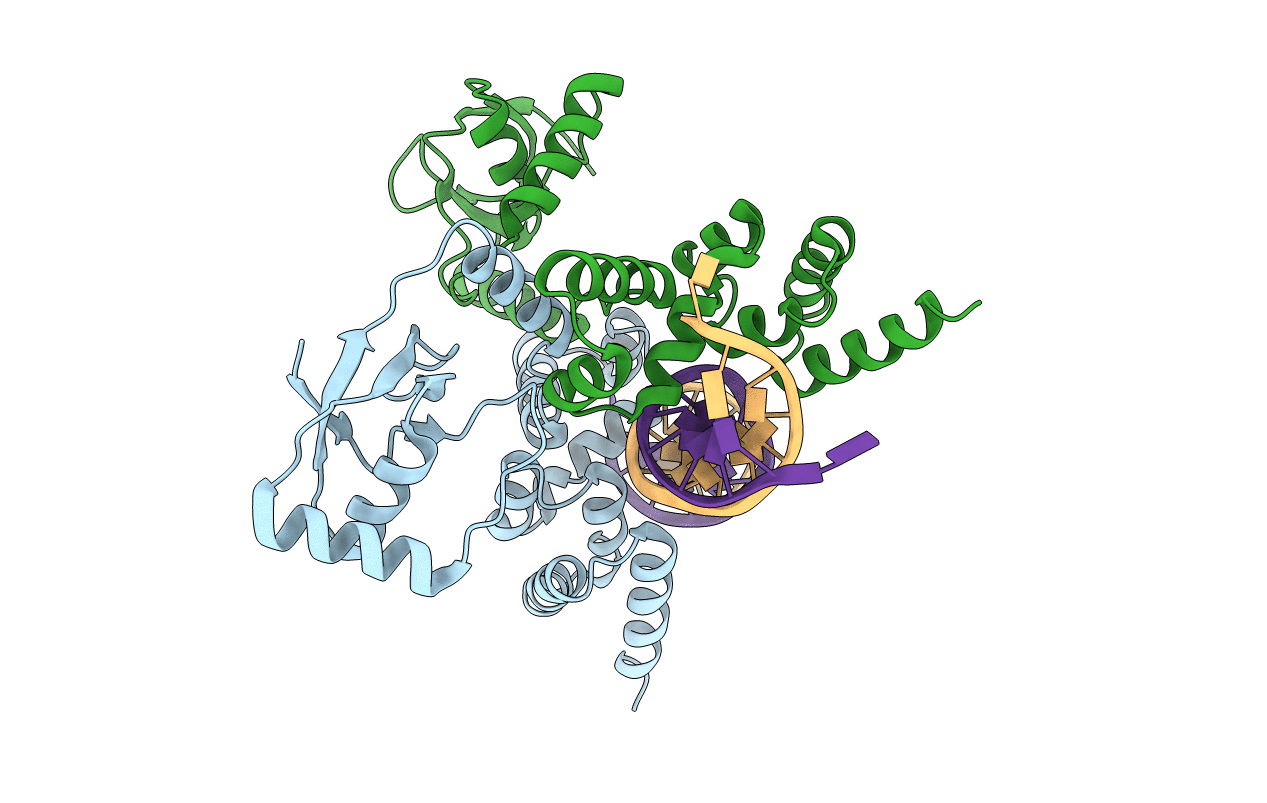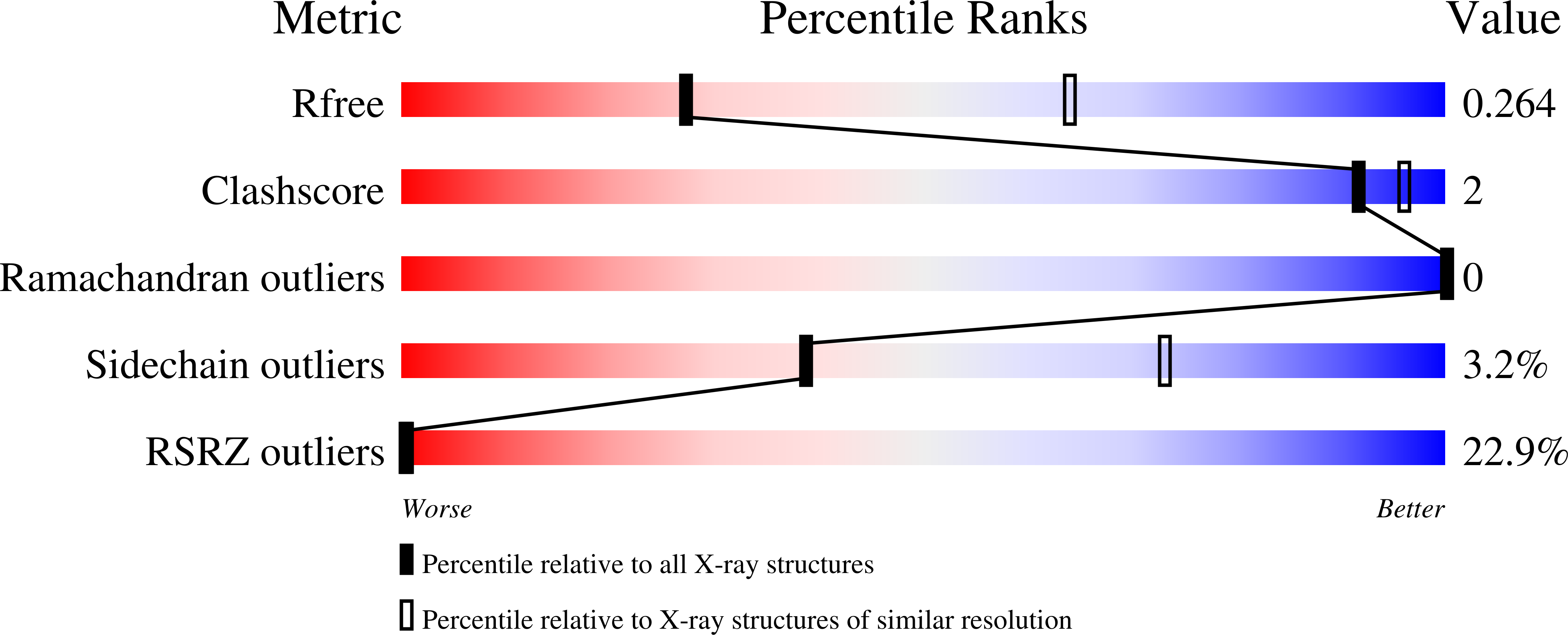
Deposition Date
2021-05-19
Release Date
2022-03-09
Last Version Date
2024-02-07
Entry Detail
PDB ID:
7OL9
Keywords:
Title:
Crystal structure of C-terminally truncated Bacillus subtilis nucleoid occlusion protein (Noc) complexed to the Noc-binding site (NBS)
Biological Source:
Source Organism:
Bacillus subtilis (strain 168) (Taxon ID: 224308)
synthetic construct (Taxon ID: 32630)
synthetic construct (Taxon ID: 32630)
Host Organism:
Method Details:
Experimental Method:
Resolution:
2.90 Å
R-Value Free:
0.27
R-Value Work:
0.22
R-Value Observed:
0.23
Space Group:
P 21 21 21


